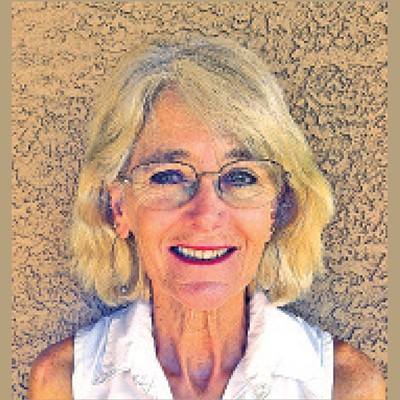The Pima County Public Library deserves much praise for the access to meeting rooms and Internet terminals that it offers the public, not to mention the many literary and educational events that it hosts.
Sadly, however, it is not so deserving of praise in regard to its book collection—that mainstay of a library.
According to a 2009 survey by the Institute of Museum and Library Services, our library ranks 28th, next to last, in the number of printed materials per resident among the 29 public-library systems that serve populations comparable to that of Pima County. This ranking is especially troubling because our library spends a considerable amount of money to buy books. In fact, in the same survey, our library ranked 16th in the amount of money spent on printed materials per resident.
How is it that a library that's in the middle of the pack when it comes to purchasing books manages to be next to last when it comes to the size of its collection? The answer is simple: It has an aggressive policy of discarding its books.
This policy is apparent in the library's "weeding guidelines" (yes, that's what they call it) for discarding adult and teen fiction. According to these guidelines, a novel should be kept in the collection for a maximum of five years, and short-story collections "of famous American and European writers" should only be kept "as long as there are school assignments or general interest in your community." Indeed, even classics are subject to removal if there isn't enough popular demand. Such a discard policy may make for great PCPL book sales (we can all buy recent, quality titles by well-known authors for a dollar or two), but it hardly helps our library build a decent collection.
Why our library should pursue such a self-destructive policy is a mystery to me. It would seem to go against the spirit and letter of the library's mission statement, which says our library should be "a destination and place of discovery that provides abundant print materials." Indeed, it is difficult to conceive of how our library having fewer books in such subject areas as Chinese trade, solar-panel technology and commercial graphic arts can benefit us economically, any more than having fewer books on how to deal with a diagnosis of cancer can benefit us in regard to our health. And it hardly helps our claim to be a center of culture when our library's collection is similarly weak in the areas of literature and the arts.
However, when the National Writers Union, of which I am a member, brought this matter before the Library Board last year (the Library Board, whose members are appointed by the county Board of Supervisors, is supposed to advise the library director), the current policy was enthusiastically reaffirmed. But the reasons we were offered, both by the board and then-library director Nancy Ledeboer, don't make any sense to us. One reason offered was that the PCPL lacked shelf space to retain more books. If this were the case, why are many of the existing shelves in our libraries half-empty? And why did the library recently replace all of its six-shelf units on the second and third floors of the main branch with three-shelf units?
It was also suggested to us that e-books might solve the problem. But e-books, far from being a panacea, may well prove, because of licensing restrictions, to be more difficult and expensive for a library to maintain than paper books.
Pima County deserves a better public library than one that ranks next to last in the number of books per resident. This is especially true when the taxpayers have already paid for books that, if they were kept instead of discarded, would allow our library to have a book collection more representative of the culturally rich and diverse city that Tucson is.







